Art Fairs
A Fair Chance: Can Mid-Tier Galleries Really Survive by Moving Beyond Art Fairs?
Gallery shares, co-ops, and other fair alternatives are all the rage. But can they really cure what ails galleries?
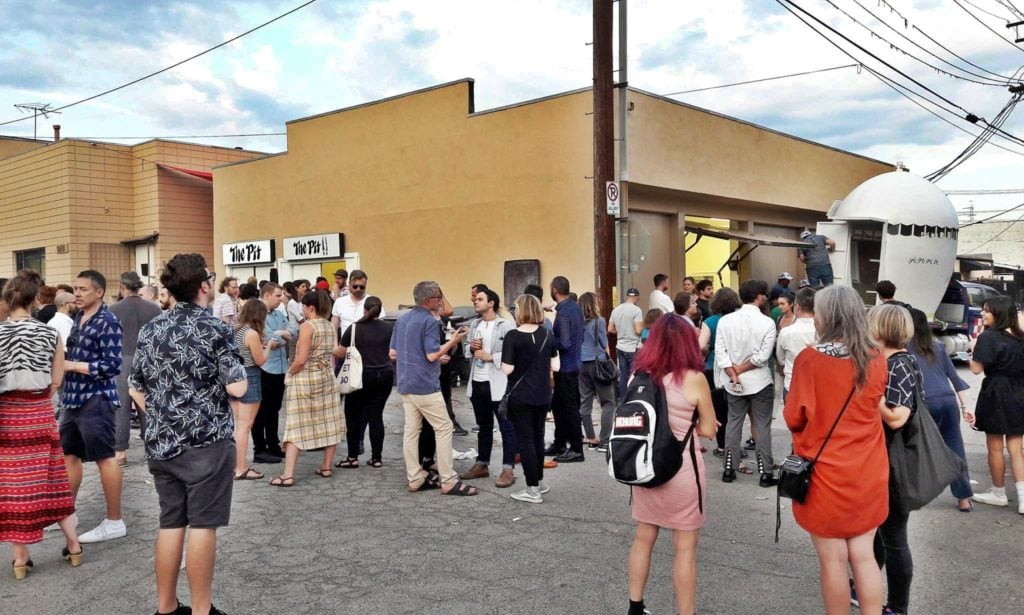
Gallery shares, co-ops, and other fair alternatives are all the rage. But can they really cure what ails galleries?

Tim Schneider

In 1967, a group of dealers established a new business model by launching Art Cologne, now widely recognized as the industry’s first art fair. The goal was to re-energize what they felt was a gasping, wheezing Modern and contemporary art market—one in which a gallery space alone often struggled to deliver the relationships and sales necessary to survive, let alone thrive.
Fifty years later, though, many emerging and midlevel gallerists find themselves asking whether Art Cologne’s founders were more Doctor Frankenstein than Doctors Without Borders. After replicating across the globe in the succeeding years, art fairs have arguably become as hazardous to their bottom line as the ailment Art Cologne sought to cure.
Still, there may be an upside to these challenges, as many dealers are now looking beyond the traditional “gallery-plus-fairs” model in an attempt to beat the reaper—and recapture the spirit that got them into the business in the first place.
“When we all dreamt of opening a gallery, we wanted to do strong exhibitions and work with artists,” says Nicole Russo, the founder of Chapter NY and a co-organizer, with Simone Subal, of one of the most prominent art-fair alternatives, Condo New York. “Nobody opens a gallery dreaming of doing art fairs.”
As hundreds of dealers prepare to descend on London for the Frieze Art Fair next week, the current reliance on art fairs seems as poised for upheaval as an overstuffed stomach on a rickety carnival ride. Over the past year and a half, no fewer than five new sales-and-exhibition alternatives have popped up in cities across the globe, from New York to Warsaw.
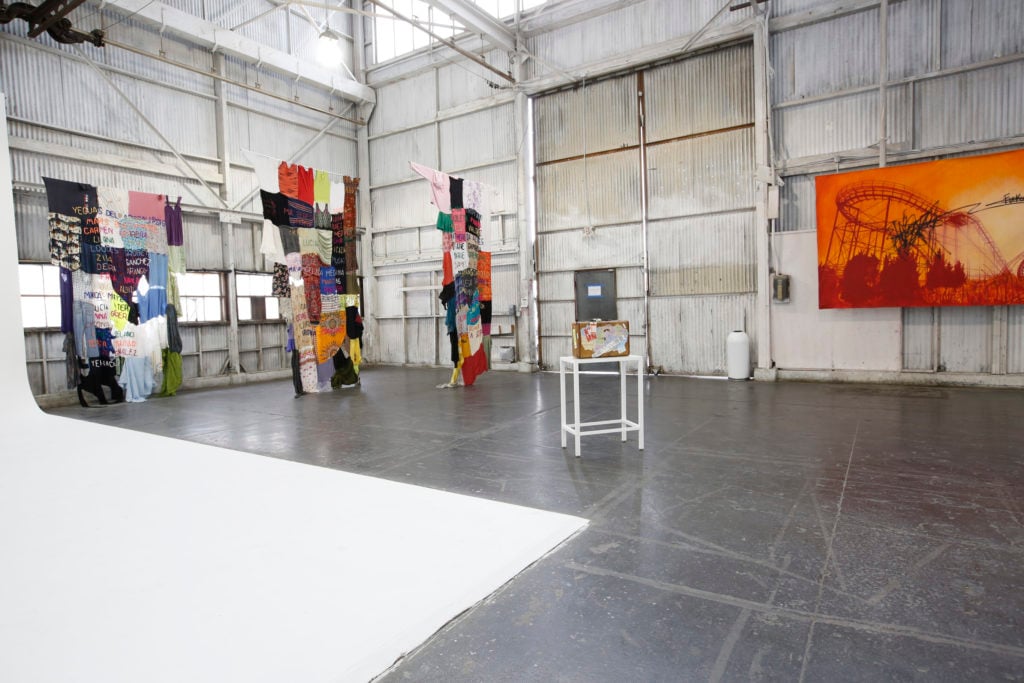
Installation view at proyectosLA. Photo: Elizabeth Lippman, courtesy of proyectosLA.
Two such projects—proyectosLA, which features artists from 19 different Latin American and US galleries, and Ruberta, an ongoing, year-round gallery-share co-run by five Latin American spaces—are open now in Los Angeles. Two others—Okey Dokey, which brought more than 15 out-of-town galleries to nine spaces in Düsseldorf and Cologne, as well as Piktogram’s Not Fair, which shepherded the model to Poland’s Palace of Culture and Science—closed earlier this month.
But do these new models completely defend mid-tier gallerists from the economic threats gathering around them? Or are they merely one element in a still-vulnerable immune response?
The number of global fairs has roughly tripled since 2005, from 68 events to somewhere between two and three hundred, depending on how you parse the statistics. Each one harbors its own murderer’s row of fixed costs, from application fees to booth customization. Together, these expenses can swell to hundreds of thousands of dollars based on the fair in question and the work one decides to exhibit.
High-end and mega-galleries are the only players with both the capital and the staff to support a never-ending campaign of costly international booth hangs—as well as to withstand disappointing returns on their investment, if the hoped-for sales never materialize.
However, many of their downmarket competitors—already under duress from an increasingly winner-takes-all system—have felt pressure to try to ride the wave or be pulled under by the riptide. Their rosters lack the high-dollar artists needed to offset the substantial costs of showing in a full slate of fairs.
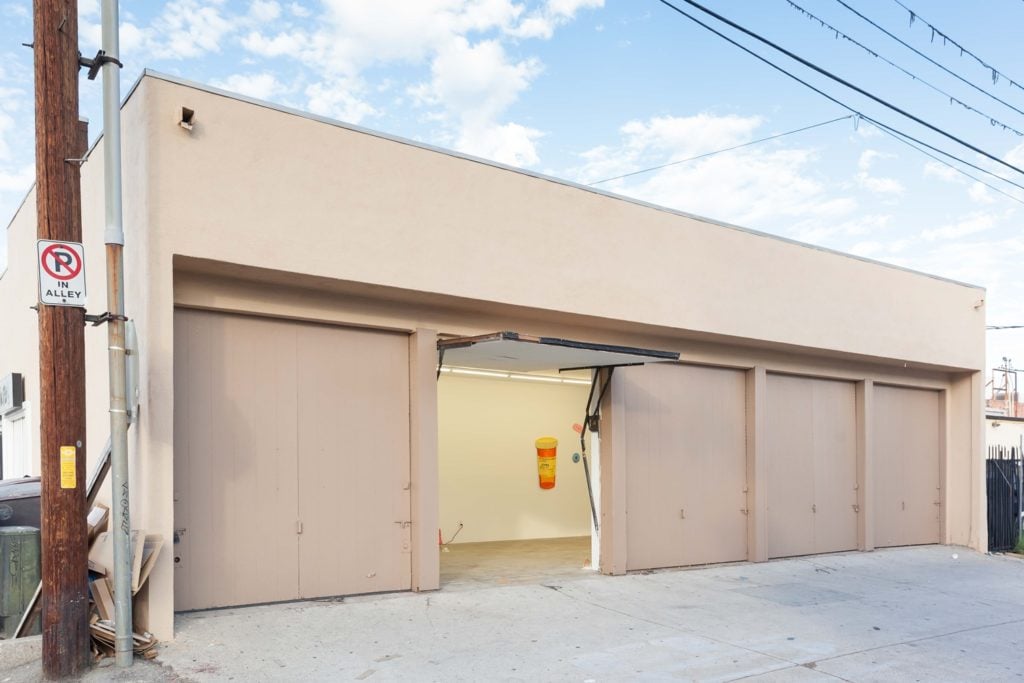
Exterior view of “El eje del mal,” inaugural show at Ruberta. Image courtesy of Ruberta.
Brett William Schultz, founder of the Mexico City gallery BWSMX and one of the co-founders of Ruberta, put it this way: “The expense and stress inherent to the non-stop [art-fair] calendar has taken a toll, especially on smaller galleries with less capital, less staff, and more [of a] penchant for riskier presentations.”
Sue Stoffel, the collector, advisor, and current VIP Relations executive for EXPO Chicago, says many smaller dealers increasingly feel as though “they have to give up the gallery or give up the fair.”
Yet that choice seems untenable. Both anecdotal evidence and various survey responses suggest that art-fair sales now generate too sizable a chunk of annual sales revenue for dealers to abandon these events entirely. At the same time, almost every notable fair still requires that applicants maintain a permanent physical exhibition space somewhere in the world to even be eligible for acceptance.
All of which seems to have led many, if not most, dealers to adopt an attitude toward exhibiting at art fairs that parallels what the members of certain ancient civilizations likely thought about making periodic human sacrifices to satisfy some bloodthirsty god: I get that history says we have to do this, but are we sure there isn’t a better way?
The most talked-about initiative among the new crop of dealer-generated alternatives is Condo, the month-long collaborative gallery project founded in 2016 by Vanessa Carlos of London’s Carlos/Ishikawa.
Condo invites a selection of host galleries to team up with one or more dealers from other locales. Each temporary alliance has the option to either co-curate an exhibition featuring artists on the rosters of all involved galleries, or to parcel the host’s space into concurrent independent shows. The model, which also launched in New York this year, will spread to Mexico City and Shanghai in 2018.
Dealers say that Condo, and other initiatives like it, offer an atmosphere of camaraderie that many feel is eroding the highly competitive arena of the traditional fair. “It’s an opportunity for various galleries to work together, to learn new programs, find a new audience, and for the visiting galleries, a new city,” Russo says.
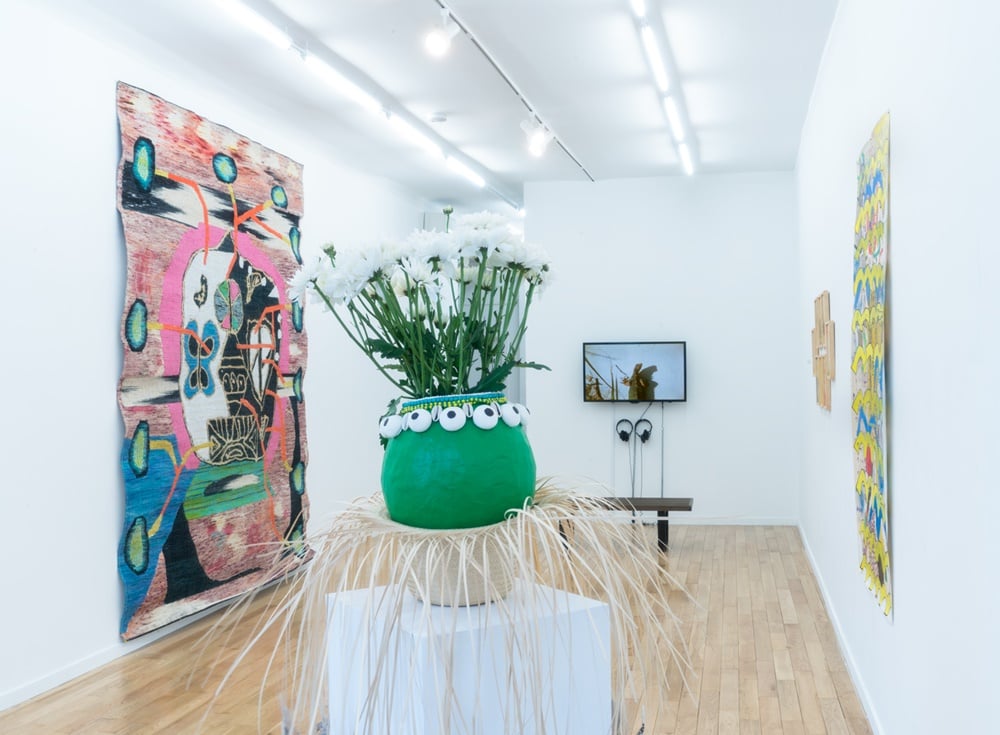
Installation view at Chapter NY, which hosted Agustina Ferreyra at the first edition of Condo New York.
The community-over-competition ethos extends to Condo’s business structure. Visiting galleries only pay what they describe as a “small” fee to cover public relations, the Condo website, hard-copy gallery maps, and a joint closing party. They are not asked to sacrifice a commission on sales made during the project’s run, pay rent, or directly compensate their host galleries in any other way.
Most important of all, the nominal “Condo fee” (for lack of a better term) essentially replaces the booth fees for a typical art fair—often, the most expensive single line item in an exhibitor’s budget.
The remaining expenses for Condo’s visiting galleries are all operational, including shipping, specialty installation (if necessary), and insurance. And while some of the same expenses are necessary to show at fairs, the difference is the scale of, and the return on, those expenses.
Jeffrey Rosen, the co-founder of Tokyo’s Misako & Rosen and a veteran of Condo and Okey Dokey, estimates that the total cost of exhibiting in gallery-share initiatives ranges from “as little as it would cost to apply to a major fair” (less than $1,000) to as much as it might cost to ship art to one of those events. (For reference, an artnet News survey of participating small-to-midsize dealers found that shipping costs to major fairs averaged between $15,000 and $45,000.)
Furthermore, instead of the four to five days typical of most traditional fairs, gallerists participating in Condo get to exhibit and network in a new territory for four weeks. As Rozsa Farkas of Arcadia Missa, a two-time host at Condo London, states, “The opening weekend feels like a gallery weekend, but then the shows are on for a month, which really gives visiting gallerists and their artists an actual presence in the city”—a presence with a higher likelihood of forging more, and more meaningful, bonds with like-minded collectors, curators, media members, and other gallerists.
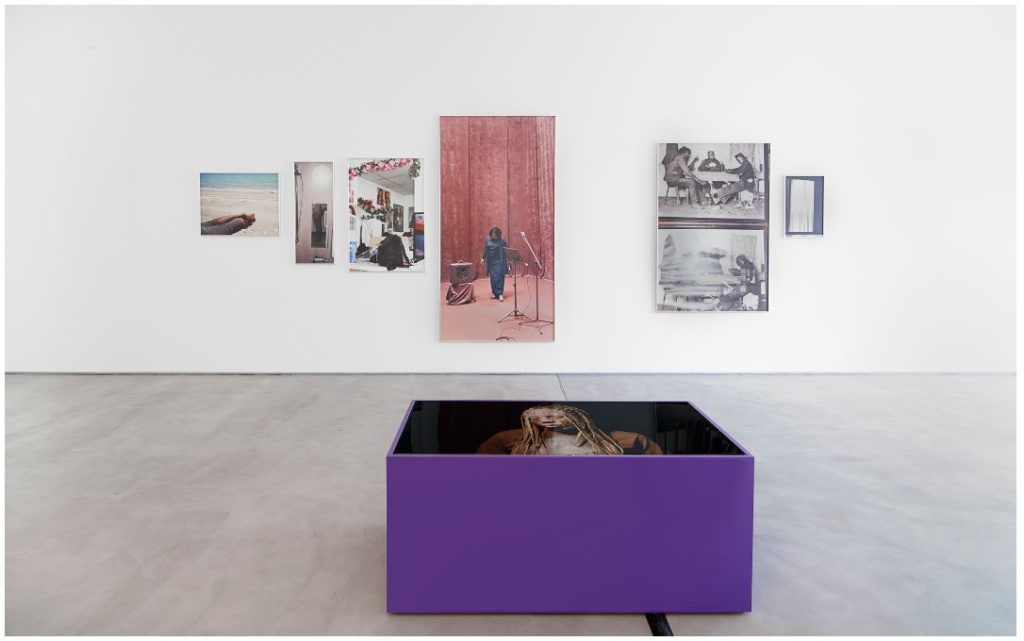
Installation view of Martine Syms at Condo, Kingly Street 2017. Image courtesy of Sadie Coles HQ.
Also crucial to the cost picture: Staff of the visiting galleries generally do not move to the host city for the length of the project. Most often, a representative arrives just long enough to set up the show, then returns home.
This leaves the hosts with most of the responsibility of maintaining and championing the shared exhibition. In the best cases, an intense and open collaboration can flourish. But without the will or necessary communication, these month-long gallery partnerships can yield much less impressive results. And this minor, avoidable caveat cracks the door to much larger cautions about the gallery-share model, and alternative models more generally.
Condo is not the first manifestation of the gallery-share concept (as Carlos herself has readily admitted in the past). Even if we ignore more casual collaborations like, say, Leo Castelli and Ileana Sonnabend’s mounting joint exhibitions in their independent spaces after their divorce, recent art-market history harbors multiple examples of outside-the-box, cooperative ventures.
For spiritual predecessors to Condo and other nascent alternatives, consider the Milwaukee International, a scrappy yet surprisingly starry fair that debuted in the namesake Wisconsin city’s Polish Falcons Beer Hall in 2006. Conceived by a collective of local artists and gallerists, the weekend event’s exhibitors included Gavin Brown’s enterprise, White Columns, Karma International, and Locust Projects, with each participant paying a booth fee of just $150.
After presenting a second edition in 2008, the Milwaukee International’s founders went on to establish the Dark Fair. True to its moniker, the event asked “an international selection of galleries, non-profits, and artists” to display works without the use of natural or artificial light.
These projects can perhaps best be thought of as alt-fairs: projects that tweak the cubicle-farm format of a traditional art fair in a more collaborative, even slightly subversive, way.
Notably, some alt-fair alumni have moved on to Condo and other gallery-share initiatives. But even these co-op events have predecessors.
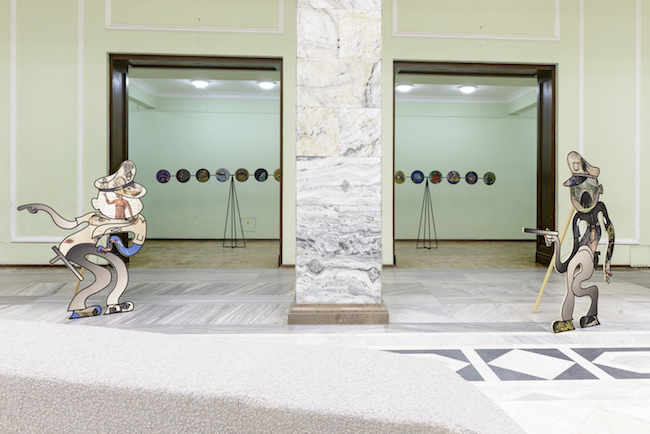
Installation view of the Not Fair, organized by Piktogram in Poland. Photo: Bartosz Górka. Courtesy Not Fair.
Take the Villa project. Spearheaded by Poland’s Raster Gallery in 2006, it debuted as Villa Warsaw, a multi-day event in which 10 international galleries converged on—you guessed it—an abandoned villa in the titular city to co-create an exhibition venue “filled with performances, spectacles, and contemporary dance presentations.”
The initiative mutated as it migrated: first to Reykjavik in 2010, then to Tokyo in 2011. But in each iteration, sub-elite dealers and artists collaborated in a shared space to produce a site-specific program outside a traditional art-industry capital, with an aim to widen the audience in a meaningful way.
So what’s different about Condo and other recent variations? Innovation—to the extent it exists there—is more organizational, or perhaps even philosophical, than foundational. As Farkas noted, “Galleries have often hosted each other or collaborated in various ways, but I think recently it’s more formalized, to show that it is perhaps a serious alternative to the art fair.”
Lorraine Kiang Malingue, the co-founder of Edouard Malingue Gallery who will lead the Shanghai chapter of Condo, believes the model also has the potential to cement art scenes that might be less developed than those in New York and London.
“A sense of community… hasn’t existed” in the Shanghai gallery ecosystem up to now, she says. “Galleries in general work autonomously so far, since the art scene is still quite small, and each gallery…attracts a different audience.”
Still, it’s worthwhile to ask why Condo’s alt-fair and gallery-share ancestors have largely faded from the industry’s memory. And that line of inquiry inevitably reveals some of the haze hovering over the concept’s ultimate potential.
Most agree that despite their appeal, these models are unlikely to be a wonder drug for struggling mid-tier galleries—nor are they likely to fully supplant the traditional art fair.
Russo notes that she “can’t imagine the fair structure not being in place for the next 10 years.” But, she adds, dealers she knows hope eventually to participate in fewer fairs—three, say, instead of the grueling schedule of six or more that many maintain now—and more Condo-like events. “It just feels more manageable for everyone: the gallery, the artist, and even the collector,” she says.
Carlos expressed a similar, though more targeted, sentiment at the Art Business Conference in London this month: “Condo won’t replace art fairs, but it replaces the pointless art fairs… I hope! Collectors want to go either to a big, top-quality fair like Art Basel, or to a small, carefully selected one. What they don’t want is to go to 10 mediocre fairs. And likewise with galleries.”
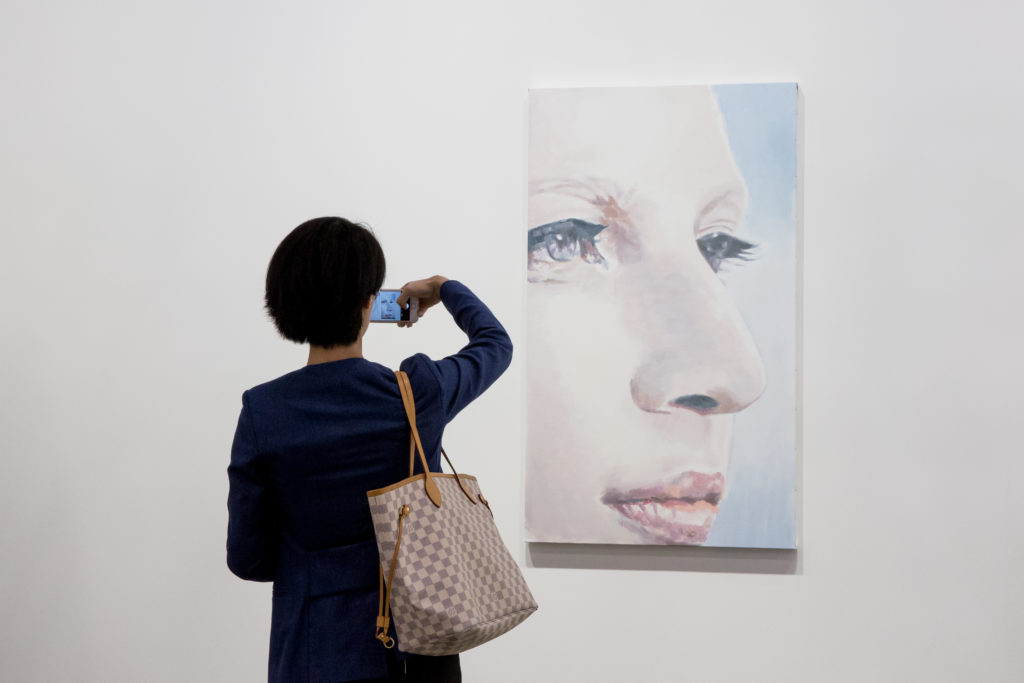
David Zwirner at Art Basel Hong Kong 2017. Photo Jessica Hromas for Art Basel.
Mediocre (or worse) fairs aren’t just small-gallery killers because they fail to deliver on the sales or relationship-building fronts. They can also be deadly because of the opportunity cost. Emerging and midlevel galleries participating in these events lack the infrastructure for a full-time fair team. Which in turn means they’re forced to pull human resources, not just capital, away from their core business to stand in as traveling salesmen.
If those traveling salesmen return to headquarters in the red, then, the gallery suffers twice. And in today’s art market, few small galleries can afford to suffer twice without landing on a cold slab in a coroner’s office.
In contrast, high-quality (though not necessarily high-end) fairs pack the most good work and smart people into the most compact space, activate a ticking clock with a short fuse, and place everyone’s business rivals—buyers and sellers alike—in plain sight. What explodes into this environment are the aphrodisiac of competition and an easily accessible path to potential discovery, which is the most that any capitalist system can ask for.
Like it or not, this leaves the best of the traditional fairs as arguably the purest, highest-impact, and most time-sensitive sales-and-networking platform the industry has invented to date.
“Fairs get a bad rap from a lot of people,” says longtime collector and advisor Thea Westreich Wagner. “But people who disparage fairs usually aren’t looking at art. They’re listening to art, and they’re getting overwhelmed by the amount of information in these venues.”
So far, the marquee names in the art-fair hierarchy do not feel threatened by alternative efforts. Quite the opposite, in fact. “Broadly speaking, if this is a cost-effective solution for certain galleries to enter a new geography, build relationships with the local arts community and other galleries, that’s a great thing,” says Noah Horowitz, the Director Americas of Art Basel.
We should not assume that smaller, more cooperative models are lasting solutions to the winner-take-all economics motivating their creation and growth. No matter how much foot traffic and offline enthusiasm they may generate, these concepts’ life span will largely be determined by their tangible return on investment.
“All these alternative initiatives are so new to collectors. I’m not sure how viable they are from a sales standpoint,” Jeffrey Rosen says. And while he stresses this uncertainty shouldn’t be a deal-breaker for gallerists due to the low cost of participation, he worries that these kinds of projects could be used to “culturally subsidize” the status quo.
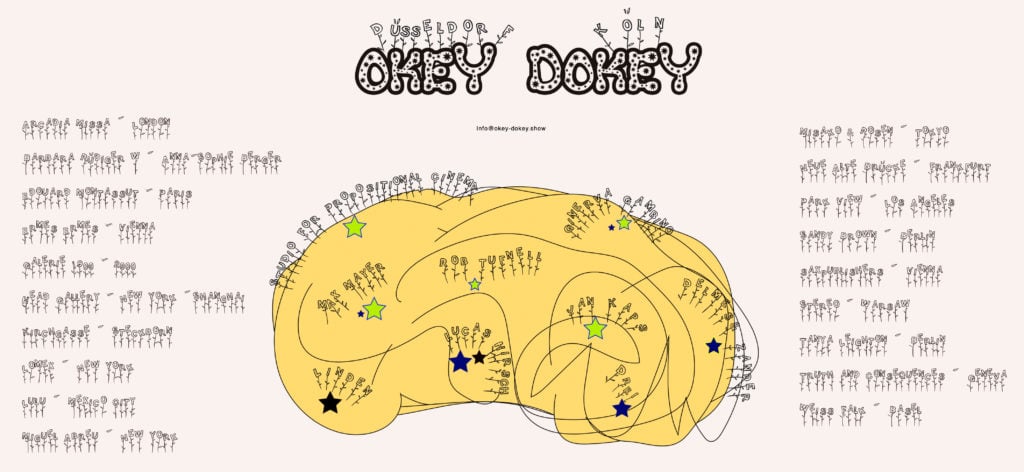
Okey Dokey logo, courtesy organizers.
“For collectors, it’s no longer so great to hang out with the 25 year-old gallerists” in their permanent spaces or at already well-established fairs, he says. Yet if alternative projects like Condo et al primarily serve as venues for collectors to snap up street cred as opposed to actual art, he cautions “we have to be wary of what that means for the long term.”
Rather than a deus ex machina, then, for now it seems both wise and fair to keep our expectations for Condo and its brethren grounded. Are they encouraging examples of creative problem-solving and collaboration in a tier of the industry that needs much more of both to remain viable? Personally, I think so. But on their own, they’re hardly any more of a bulletproof solution for emerging and midlevel galleries than traditional art fairs have turned out to be.
Still, the first step to solving any problem is acknowledging that it exists. And these projects and their founders are nothing if not clear-eyed about the challenges facing their constituents in 2017 and beyond. As Brett William Schultz notes, “Ultimately it’s up to the galleries to decide where and how they want to invest their money, so, you know, what are you going to do? Sit there and cry about how hard it is, or try something new?”